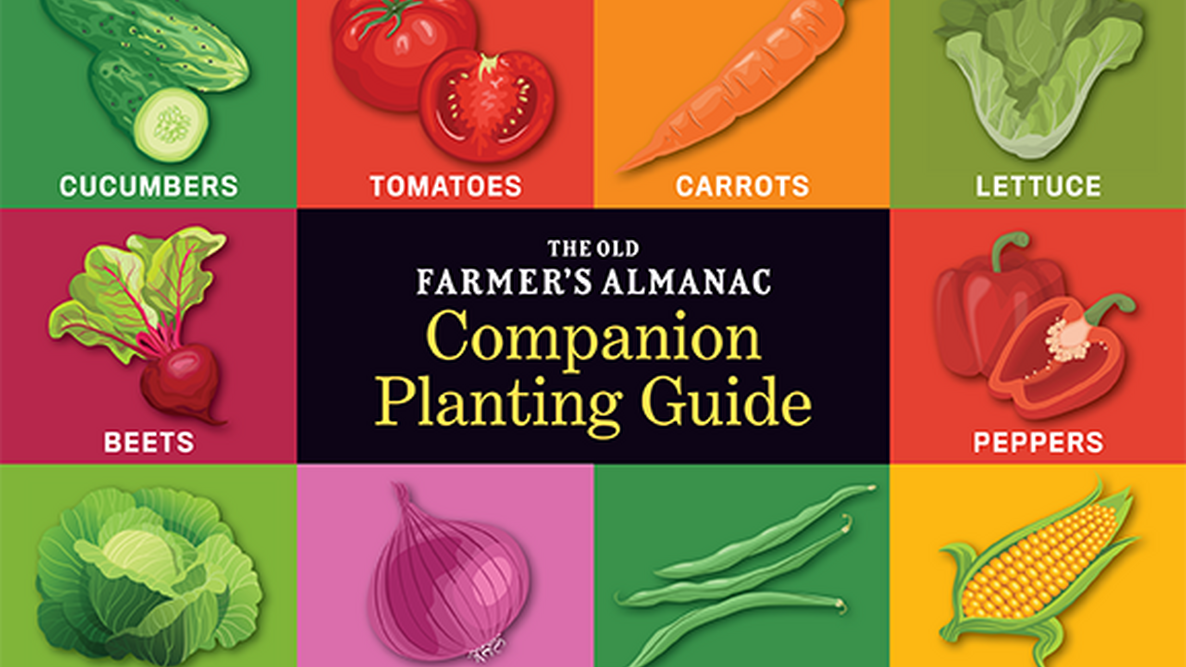The Ultimate Guide To Planting Herbs Together
The Ultimate Guide to Planting Herbs Together
Growing herbs is a great way to add flavor and freshness to your cooking, and it can also be a fun and rewarding hobby. But if you're new to herb gardening, you may be wondering how to choose the right herbs to plant together.
In this guide, we'll discuss the basics of companion planting, and we'll give you some tips on which herbs grow well together. We'll also cover some of the benefits of companion planting, and we'll provide some examples of different herb combinations that you can try.
What is Companion Planting?
Companion planting is a gardening practice that involves planting certain plants together in order to benefit each other. Some plants, for example, can help to repel pests or diseases, while others can improve the flavor or growth of their neighbors.
There are many different principles of companion planting, but some of the most common include:
- Planting herbs that have similar growing conditions together. This will help to ensure that all of your plants have the nutrients and moisture they need to thrive.
- Planting herbs that attract beneficial insects together. These insects can help to control pests and pollinate your plants.
- Planting herbs that repel pests together. These herbs can help to keep harmful insects away from your other plants.
- Planting herbs that improve the flavor or growth of each other. Some herbs, for example, can help to improve the flavor of tomatoes, while others can help to deter deer.
Benefits of Companion Planting
There are many benefits to companion planting, including:
- Increased crop yields
- Reduced pest and disease problems
- Improved soil health
- Increased biodiversity
- More attractive gardens
Examples of Herb Combinations
Here are some examples of herb combinations that you can try:
- Basil and tomatoes: Basil is a natural pest repellent that can help to keep aphids and other pests away from tomatoes. It can also improve the flavor of tomatoes.
- Chives and roses: Chives can help to repel aphids, spider mites, and other pests from roses. They can also improve the health of rose bushes by attracting beneficial insects.
- Lavender and carrots: Lavender can help to repel carrot flies and other pests from carrots. It can also improve the flavor of carrots.
- Marigolds and cabbage: Marigolds can help to repel cabbage moths and other pests from cabbage. They can also improve the growth of cabbage plants.
- Parsley and beans: Parsley can help to improve the nitrogen levels in the soil, which can benefit beans. It can also attract beneficial insects that can help to control pests.
Conclusion
Companion planting is a great way to improve the health and productivity of your herb garden. By planting the right herbs together, you can help to deter pests, improve pollination, and boost the flavor of your herbs.
If you're new to herb gardening, companion planting can be a great way to get started. There are many resources available online and in libraries that can teach you more about companion planting. With a little planning, you can create a beautiful and productive herb garden that will benefit you for years to come.
Are you planning to plant herbs in your garden? If so, you'll want to make sure you're planting the right herbs together. Some herbs, like mint, can be invasive and crowd out other plants. Other herbs, like basil, need full sun, while others prefer partial shade.
To help you plan your herb garden, I recommend visiting Gardenia Inspiration. This website has a comprehensive planting herbs together chart that shows you which herbs are compatible with each other. You can also find information on the growing conditions each herb prefers, so you can make sure you're planting them in the right spot.
In addition to the planting herbs together chart, Gardenia Inspiration also has a wealth of other information on herb gardening, including:
- How to choose the right herbs for your climate
- How to plant and care for herbs
- Recipes using fresh herbs
- Tips on harvesting and storing herbs
I highly recommend visiting Gardenia Inspiration if you're interested in learning more about herb gardening. The website is a valuable resource for both beginner and experienced gardeners alike.
FAQ of planting herbs together chart
Q: What are some good herbs to plant together?
A: There are many herbs that can be planted together, but some of the most popular combinations include:
- Basil, tarragon, and oregano: These Mediterranean herbs tend to pair well due to similar growing requirements, and planting oregano alongside basil and tarragon may help prevent pests.
- Lemon verbena, dill, and cilantro: These herbs all have a strong fragrance that can help deter pests.
- Lavender, rosemary, and thyme: These herbs all have similar water and soil requirements, and they can also help attract beneficial insects to the garden.
- Parsley, sage, and chives: These herbs are all commonly used in cooking, and they can also help improve the flavor of each other's dishes.
Q: What are some herbs that should not be planted together?
A: There are a few herbs that should not be planted together, as they can compete for nutrients or water, or they can even release toxins that can harm the other plant. Some of these herbs include:
- Basil and mint: These two herbs are both very aggressive growers, and they can quickly take over a garden bed.
- Cilantro and dill: These two herbs have similar growing requirements, but they can cross-pollinate, which can reduce the flavor of both plants.
- Sage and rosemary: These two herbs can release toxins that can harm the other plant.
- Tomatoes and basil: While basil is often recommended as a companion plant for tomatoes, some studies have shown that it can actually reduce the yield of tomatoes.
Q: How can I use a planting herbs together chart?
A: A planting herbs together chart can be a helpful tool for planning your herb garden. By looking at the chart, you can see which herbs can be planted together and which ones should be avoided. You can also use the chart to get ideas for different herb combinations that will complement each other's flavors and benefits.
Q: What are some of the benefits of planting herbs together?
A: There are many benefits to planting herbs together. Some of the most common benefits include:
- Increased yields: Some herbs can help improve the growth and yield of other herbs. For example, basil can help improve the flavor of tomatoes, and chives can help repel pests that can damage other herbs.
- Improved pest control: Many herbs have natural pest-repelling properties. By planting these herbs together, you can help create a more pest-resistant garden.
- Enhanced flavor: When herbs are planted together, their flavors can blend together, creating a more complex and flavorful dish.
- Increased biodiversity: Planting a variety of herbs together can help attract beneficial insects and pollinators to your garden.
Q: What are some tips for planting herbs together?
A: Here are a few tips for planting herbs together:
- Consider the growing conditions of the herbs you want to plant. Some herbs need full sun, while others prefer partial shade. Make sure to plant herbs with similar growing conditions together.
- Plant herbs with different heights together. This will create a more visually appealing garden and help prevent taller herbs from shading out shorter herbs.
- Space herbs appropriately. Herbs need different amounts of space to grow. Make sure to space herbs accordingly so that they have enough room to grow and thrive.
- Water herbs regularly. Herbs need regular watering, especially during hot, dry weather. Make sure to water your herbs deeply and infrequently to avoid root rot.
- Fertilize herbs regularly. Herbs benefit from regular fertilization. Use a balanced fertilizer to feed your herbs throughout the growing season.
Image of planting herbs together chart
- Image 1: This chart shows which herbs can be planted together and which should be avoided. For example, basil and tomatoes are good companions, while mint and rosemary should be kept separate.

- Image 2: This chart is more detailed, showing the specific benefits of planting certain herbs together. For example, planting basil and tomatoes together can help to deter pests.

- Image 3: This chart is designed to be used as a reference guide, with space to write in the names of your own herbs and their companions.

- Image 4: This chart is in the form of a wheel, with each herb represented by a slice. The herbs that are compatible with each other are placed next to each other on the wheel.

- Image 5: This chart is a more artistic representation of companion planting, with each herb represented by a colorful illustration.

Post a Comment for "The Ultimate Guide To Planting Herbs Together"